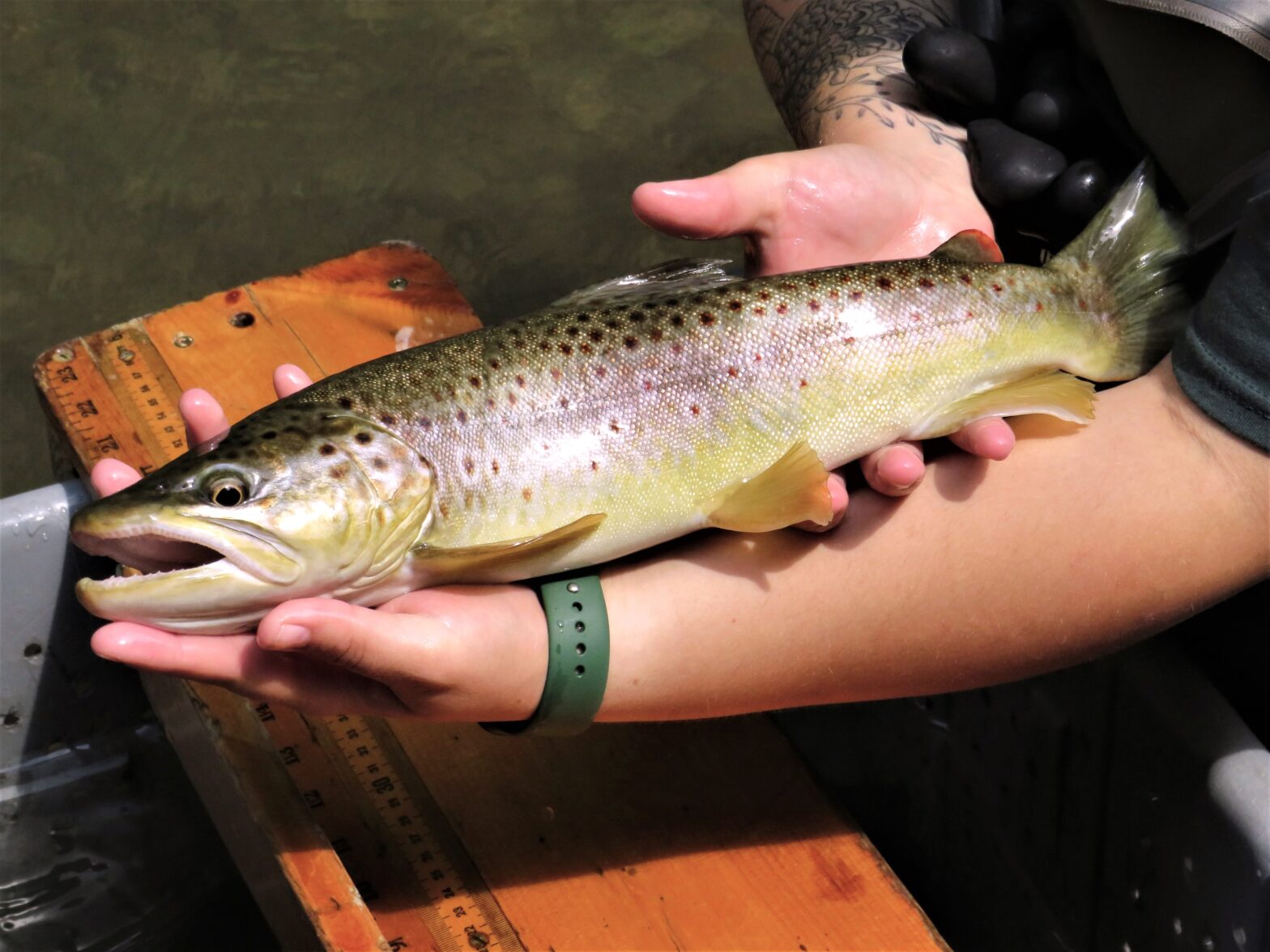
Spring is fast approaching, and to many people that means the start of trout fishing. Recently instituted fishing regulations now allow for trout fishing year-round (October 16 to March 31, catch and release only, artificial lures only), but to many anglers, April 1 will always be the “opener.”
Western New York is blessed with an abundance of trout waters, from tiny flows you can easily step across to the renowned Genesee River. Our trout streams are categorized as wild-premier, wild-quality, wild, stocked, and stocked extended. The requirements associated with each category are a bit lengthy and can be found in the NYS Department of Environmental Conservation (DEC) literature at New York State Inland Trout Fishing Regulations (2024).

Most anglers seeking trout are familiar with a few of the streams that are close by, but if you’re willing to put in the time to learn about our streams, you’ll find that there are far more trout streams in our region than you think, and many of them are high-quality waters that are seldom fished after April and May.
In 2010 to 2013, the DEC conducted Eastern Brook Trout Joint Venture Surveys (EBTJVS) in DEC Region 9, which covers most of western New York, to assess the status of brook trout (Salvelinus fontinalis) populations in our region. The surveys evaluated 1,583 streams for the presence of brook trout, brown trout (Salmo trutta), and rainbow trout (Oncorhynchus mykiss); 1,322 of these streams had never been sampled before. Two hundred and eight-seven of the streams evaluated were either dry or lacked sufficient flow to conduct electro-fishing, the method used to sample the streams.
In the 1,296 streams electro-fished, the DEC found populations of only wild brook trout in 142 streams as well as 52 streams where brook trout coexisted along with brown trout or rainbow trout. Wild brown trout occurred in 213 streams and wild rainbow trout in 31 streams. Granted, the vast majority of these streams are too small for most anglers to ever consider fishing them. I know of only a few anglers who do fish them, and occasionally they do quite well. You just have to be persistent and accept the fact that most small streams in our region don’t hold any trout. You also have to deal with limited access, as nearly all of these streams are on private property. Learn to identify landowners, don’t be afraid to knock on doors, and politely ask for permission to fish. I seldom get turned down when I do.

Despite their widespread distribution in much of Region 9, many brook trout populations exist at low levels of abundance. Threats to wild brook trout populations include poor land-use practices, increasing impacts from beaver dams and ponds, man-made barriers such as improperly constructed culverts, and competition from salmonid species. Don’t contribute to these threats: use barbless hooks, handle the fish gently, and return them to the water as quickly as possible.
It’s not just the small streams that are often ignored. From 2021 to 2023, I volunteered to help the DEC conduct trout population surveys on many of the wild-quality and wild-premier trout streams in Region 9, which included most of the best trout streams in our region. This work (it was hardly work; I haven’t had that much fun since I was a kid!) was performed from late June to late September. I learned much about our trout streams during this work, including the amazing abundance of trout in some streams, the positive impacts that even a small, high-quality tributary can have on a stream section, the importance of carrying a good-quality water thermometer when fishing, and the powerful impact a waterfall has on a trout stream. But perhaps the fact that most stood out was the near total lack of anglers on these streams. In 2021, I counted only four anglers on the streams we surveyed! Some of the best fishing for wild trout in the state was available, and hardly anyone was there to take advantage of it!
